
Cook Is. sunset

Cook Island flag with the union flag which denotes the historical link with the UK, and the fifteen stars represent each of the islands that make up the Cook Islands.

The map will give you an idea of the location of the Cook Island – they are three and a half flying hours from Auckland. You can see a read mark that I have placed on the northern island of New Zealand that indicates the approximate location of Auckland.
The capital of the Cook Island is on the island of Rarotonga and is called Avarua.
The total land mass of all fifteen islands adds up to 240 square kms (93 sq miles). The ocean economic zone under the Cook Is control is 1.96 million square kms (757 sq miles).
A spot of trivia Captain Cook visited the islands in 1773 and 1777 and he named one of the islands as Hervey Is. and later the whole group was known as the Hervey Is.
The change in name came about because of the Russians in the 1820’s.

Adam Johann von Krusenstern 1777-1846
Adam Johann von Krusenstern was a Baltic German Admiral, born in Estonia from a Swedish aristocratic family, who had remained in Estonia after Estonia became part of Russia in 1787.
He joined the Russian Imperial navy, and even served six years in the Royal Navy, but in 1803 he in command of one ship in company with another Russian ship sailed around the world via Cape Horn, the north Pacific, and Cape of Good Hope. In his report to Tsar Alexandra, he referred to the Hervey Is as the Cook Is. to honour Captain Cook.
His work was translated in to English and later into Dutch, French, Spanish, Danish and Italian. Hervey Is. had become Cook Is.

The above is a picture of the Padua. Launched in 1926 for F. Laeisz of Hamburg and was the last of the P-Line (so name due to all the ships in this line began with ‘P’). The ship sailed under the German flag of the day –
 the Weimar Republic, and later
the Weimar Republic, and later
 under the Nazi flag, and later again
under the Nazi flag, and later again
 the Merchant navy flag of Germany from 1946 – 1949
the Merchant navy flag of Germany from 1946 – 1949
 in 1946 she was surrendered to the USSR and became part of the Russian navy. She was renamed Kruzenshtern after Admiral Adam Johann von Krusenstern.
in 1946 she was surrendered to the USSR and became part of the Russian navy. She was renamed Kruzenshtern after Admiral Adam Johann von Krusenstern.
 her flag today, & if you wish to know more click here.
her flag today, & if you wish to know more click here.
Back to the Cook Is.
I flew from Sydney direct to Rarotonga in March 1987, the flight time being five hours forty minutes.
I left on a Sunday and arrived at 7.00 pm on Saturday – perhaps a time warp Captain Kirk, which gave me two Sundays in that week.

It had only been three months since the Cook Is had been devastated by Cyclone Sally and the 190 km winds.
From December 1986 through to January 1987 Hurricane Sally swept across Rarotonga and cause a lot of damage.
Our agent was the only IATA agent on the island, which came in handy for Skypak, plus it was one of the few buildings undamaged by the cyclone being brick and steel.
 The island had one tarmac road that circumnavigated the island, and I was driven the twenty miles (32 km) around the island in forty minutes and saw the rebuilding of life in the Cook Is. The people were all very friendly and as we were not in any rush to complete the journey, I was happy to wave to anyone who waved at me.
The island had one tarmac road that circumnavigated the island, and I was driven the twenty miles (32 km) around the island in forty minutes and saw the rebuilding of life in the Cook Is. The people were all very friendly and as we were not in any rush to complete the journey, I was happy to wave to anyone who waved at me.
The population of the island at that time was about 9,000 people and I think I waved at most of the islanders. My arm ached by the time we returned to the office.
 Avarua was a quiet place in 1987.
Avarua was a quiet place in 1987.
The acceptable currency was either New Zealand dollars or Cook Is. dollars. I think there is a saying in the USA, that if anything is not correct it is as bad as a three-dollar bill. The saying has not translated to the Cook Is.


I found the above currency in one of my books that I used as a bookmark – the book was


I stayed in a small resort just outside of Avarua called Cook Is Raro Club, I found the above from their web page – it has changed a lot since 1987. While I was there the reconstruction was in full swing.

Bedrooms were like a small chalet, very pleasant and the sound of the sea could be heard.

Our agent had arranged for me to be a temporary member of the local fishing club. The idea of the club was not sitting on a riverbank with rod and line but chasing the marlin deep sea.
After studying the photographs around the wall of the club it looked an exciting trip, but due to my limited time I only saw the members in the evening and had to refuse their offers of a fishing trip

In 1987 the club was a much smaller building among overgrown trees and grass and you could not see the sea from the club due to the undergrowth – what a change today.
The Cook Is. has become a holiday island, but thirty-five years ago it was a quiet back water. Few people could afford to visit, unlike now with cheap holiday flights, and not just from New Zealand and Australia. (Pre covid of course)
Entertainment in the evening was limited and it was a long walk to Avarua from the resort and quite hot even in the evening.
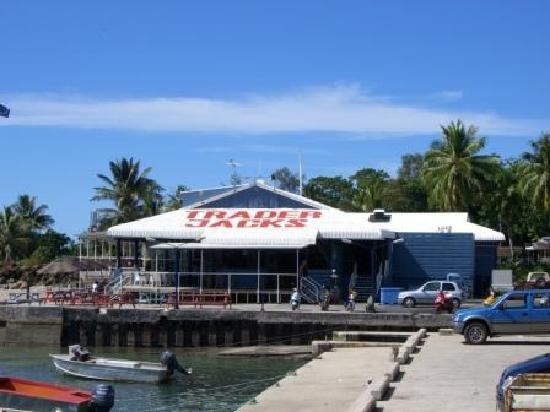
At the harbour I did enjoy a beer or two with our agent at Trader Jacks. It had been damaged by the cyclone, but the beer was cold and conversation with the locals was always interesting. Oddly enough the damage to the place gave it a strange air of history. I believe that it was closed and had to be rebuilt. It was reopened in 1989, and as far as I know still going strong.
A cold beer and a cool breeze what more could be better.
The above pictures of Trader Jacks are of the modern buildings, rather than how things were when I visited Rarotonga. Trader Jacks had only been open about six months before Cyclone Sally visited the Cook Is.
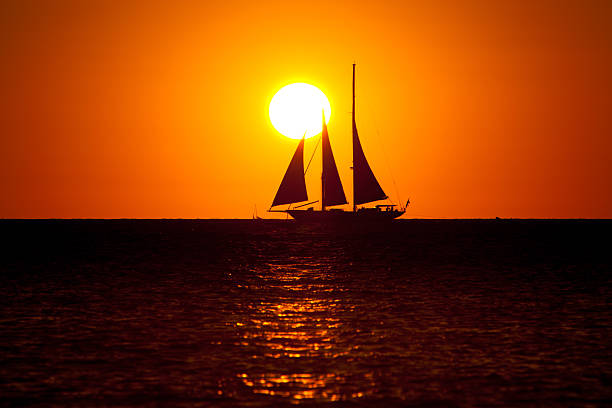
The Cook Islands are well worth a visit if you get the chance to be wandering around the Pacific.












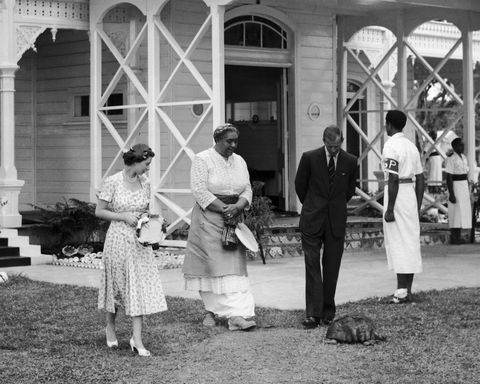






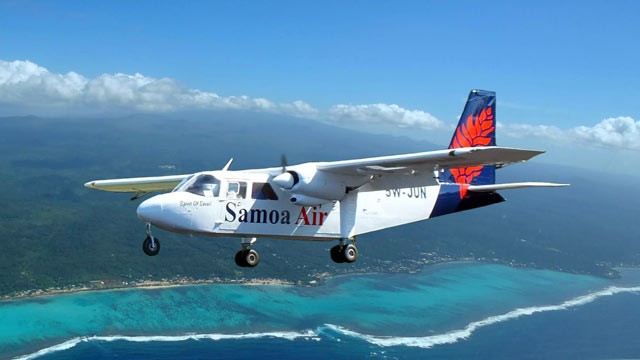


 A shot of the hotel when closed.
A shot of the hotel when closed.
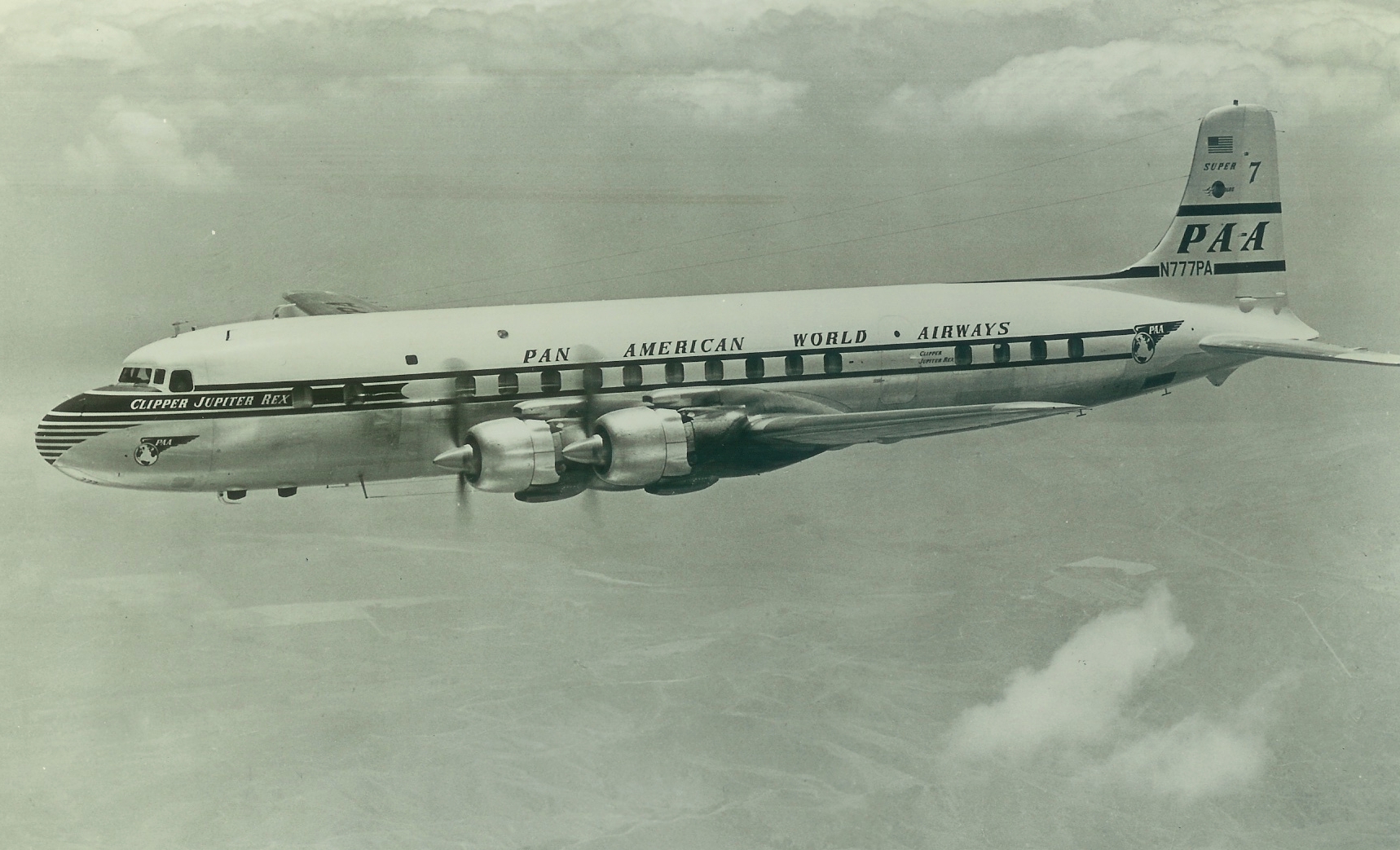

 Somerset Maugham 1874 – 1965
Somerset Maugham 1874 – 1965 This is the guest house were Somerset Maughan and his companion stayed for six weeks while he wrote the outline of a short story called Miss Thompson.
This is the guest house were Somerset Maughan and his companion stayed for six weeks while he wrote the outline of a short story called Miss Thompson.

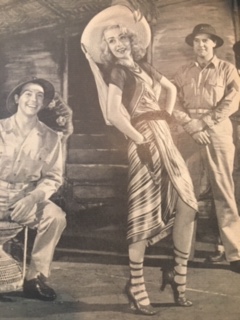 who played Sadie Thompson
who played Sadie Thompson
 The guesthouse (now renamed) where Somerset Maughan stayed in 1916 has become so famous that they have a sign outside.
The guesthouse (now renamed) where Somerset Maughan stayed in 1916 has become so famous that they have a sign outside.





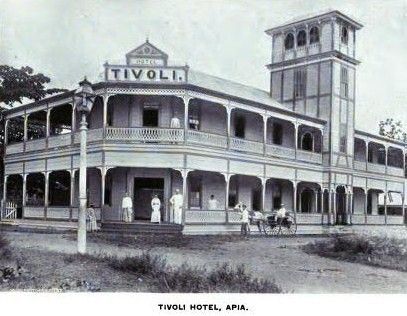







 who was awarded three Academy Awards, a Golden Globe and a number of other awards,
who was awarded three Academy Awards, a Golden Globe and a number of other awards, She received a citation from the US Government for selling $300 million worth of War Bonds during WW2. She was known as the ‘Bond Bombshell’.
She received a citation from the US Government for selling $300 million worth of War Bonds during WW2. She was known as the ‘Bond Bombshell’.  Two Academy Awards, Three BAFTAs, Two Golden Globes.
Two Academy Awards, Three BAFTAs, Two Golden Globes. Two Emmy awards & and a stamp issue by Canadian Post
Two Emmy awards & and a stamp issue by Canadian Post
 CBE, but he declined a Knighthood
CBE, but he declined a Knighthood Academy award winner
Academy award winner


